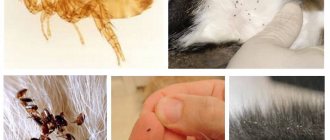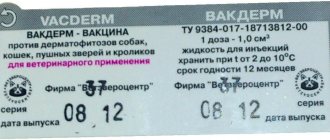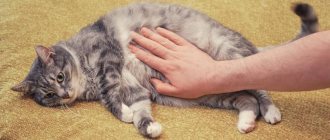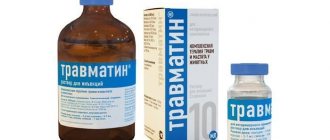Cats are amazingly graceful and freedom-loving creatures. But despite their independence and a certain waywardness in behavior, they are incredibly sensitive and vulnerable animals. There can be many reasons for stress in cats: a trip to the veterinarian, the arrival of a new tenant in the apartment, moving to a new place, being on the road. And it doesn’t matter at all whether this journey turns out to be several days long or an hour-long trip to grandma’s dacha: the animal will worry and experience stress from being in an unfamiliar environment. Of course, there are unique “specimens” of adventurous cats that perceive any movement in an unfamiliar space with joy. However, this is rather the exception that proves the rule: cats have a hard time on the road. A sedative for cats can come to the rescue in such situations. You definitely need to take it on the road.
Why can a cat feel stressed on the road?
For the most part, animals, and cats are no exception, obey the natural instinct of self-preservation. The main principle of this instinct is the ability to control the situation and anticipate danger in time. And four-legged pets can easily cope with this task within the walls of their home - where all the objects and corners have long been studied, the smells are familiar, food and water are within visible limits, and the place to sleep has been agreed upon with the owners. Another thing is the situation while traveling. It can be difficult to manage without sedatives for cats on the road. After all, almost everything, from unfamiliar smells and sounds to the basic uncertainty of its future, frightens the animal. If, in addition, the cat is sensitive by nature or has recently suffered from an illness, then the stress will be even greater. An important factor is the habitat of the furry traveler - if the cat lives in a private house with the opportunity to go outside, then the trip will not be such a severe test. And on the contrary, in the case when the animal did not go further than the staircase, any movement outside will lead it to a state of nervous excitement.
Prevention of motion sickness
To calm your cat before a trip and reduce the risk of motion sickness, you can offer him to smell fresh mint leaves or special happy pheromones sold in pet stores.
To prevent the vehicle from frightening your pet, it is recommended to transport it short distances from childhood. The cat often gets sick out of habit, but if he retains pleasant childhood associations, then the likelihood of vomiting is minimized. The animal should not eat 2-3 hours before travel, and fluid intake should be reduced as much as possible. Cat medications for motion sickness should be fed to the pet in advance, and not when the pet exhibits negative symptoms. The car must first be ventilated and the aromas removed; artificial aromas of pine needles, citrus fruits and menthol are especially unpleasant for the animal. Smoking during the trip and listening to loud music is prohibited, as this will aggravate the pet’s condition. Before transporting, you can appease your cat by playing with it or scratching its fur.
Advice from veterinarians before traveling
There are several simple recommendations for owners that will help reduce the level of anxiety of the animal. So:
- Cats, as mentioned above, are very perceptive and sensitive creatures. They literally read the mood of their owner. Therefore, before the trip, you need to remain calm: you should avoid fuss when packing your things. Excessive emotionality and excitability will instantly be transmitted to your furry friend. The best solution would be to gradually collect things and not rush.
- It is necessary to take care in advance about choosing a sedative for your cat on the road. It is advisable to give preference to one or another drug after visiting a veterinarian and receiving his recommendations. Reading owner reviews will be a big help.
- Special attention should be paid to the cat carrier - it must be made of high-quality materials and match the size and weight of the animal. If the carrier is not used for the first time, then there are probably odors and animal fur left in it - this will make the task of staying in it easier. If the cat is traveling for the first time, then it is worth putting the purchased house for the road in a visible place so that she can properly examine it.
- It is worth taking care of the animal’s nutrition on the road. There is a possibility that due to stress, the cat will completely refuse to eat. However, food and water should be on hand. Experts also advise bringing your furry friend's favorite treat with you.
- If your cat has a favorite toy or personal bedding, be sure to take it with you on the road. These pieces of home will give you confidence in stressful situations.
Causes of motion sickness
The cat is less likely to get sick if it is in a carrier or covered box. In the dark, surrounded by walls, your pet will feel safe.
Veterinarians justify a cat’s acute negative reaction to a trip by exposure to stress factors and a physiological reaction due to a weak vestibular apparatus. A change of scenery, a strong smell of gasoline, and deafening noise from cars and people causes stress and panic in pets, which can lead to poor health and a desire to empty their stomach. If the animal travels in transport for the first time, the negative symptoms intensify. Research has also shown that in a moving car, the part of the cat's brain that controls gagging is activated, a possible explanation is a reaction to strong vibration and rapidly changing objects outside the window.
Herbal preparations: methods of use
The most popular sedatives for cats in this category are:
- "Fitex" (liquid for instillation). Contains medicinal herbs. This product should not be used if your pet has low blood pressure. Give 3-5 drops in the morning, afternoon and evening. Can be added to food provided it is completely eaten.
- “Stop Stress” (drops) – calming drops for cats. Similar in composition to the drug "Fitex", but also contain phenibut. Used at the rate of 1 kg of animal – 1 drop of product. It should be given in two doses.
- "Cat Bayun" (tablets and infusion). They contain only plant substances and can be given to cats from 10 months. The result is achieved after 5-7 days of use.
- “Fospasim” (liquid for injections and drops). The drug is quite fast acting. Consists of medicinal herbs and mineral components. Injections are administered subcutaneously or into the muscle at a rate of 0.1 ml per 1 kg of animal weight. Drops – 10-15 drops 1-2 times a day. The course lasts about 10 days.
- “Feliway” (in the form of a spray or a bottle with a substance for connecting to an outlet). Its distinctive feature is that it contains pheromone F. The drug is odorless and colorless. Non-toxic.
Second echelon
There are a number of other drugs on the market. They are rarer and, as a result, less popular, although these are all domestic brands.
"Antistress" ()
Question answer
What are the rules for transporting animals in passenger trains?
Available in tablet form separately for cats and dogs. Ingredients: vitamins + motherwort, essentially brewer's yeast with motherwort. It will be useful for animals with a weak nervous system when taken in courses. It does not act quickly, so it is useless to give it immediately before a trip. In this case, it is better to choose another drug as a sedative that will begin to work soon after administration.
"Vetspokoin" ()
Release form: suspension and tablets. The composition includes phenibut, royal jelly and promethazine, which has an antiallergic effect. Phenibut has already been discussed above. According to veterinarians, preparations containing it require caution in use, since animals often experience undesirable reactions to this substance. It is important to avoid overdose! Bee products can also serve as an allergen for animals.
"Fitex" ()
Available in the form of drops. Wonderful natural composition: extracts of valerian officinalis, motherwort, common hop, Baikal skullcap. But you need to give it three times a day. Contraindicated in Greyhounds and animals with low blood pressure. In case of overdose, drowsiness and lethargy may occur.
Dangers of a summer cottage: how to prepare a pet for country life
More details
Drugs with chemical composition
These products can only be used after consultation with a veterinarian and after prescribing the required dosage for each specific cat. They have quite a few contraindications and are used exclusively in emergency situations:
- Buspirone (tablets). An effective remedy for combating stress in cats. However, the effect of the medicine does not begin immediately, but after several weeks of use (about a month). It has the effect of accumulating in the animal’s body. Prescribed for phobias in animals.
- Diazepam is a strong tranquilizer. It quickly calms and relieves aggression in cats, but has a number of contraindications.
- "Vetranquil" (liquid for injections). Very quickly calms down, eliminates excitability and nervousness of the animal. Begins to act in a few minutes.
- "Amitriptyline" (liquid for injections). Used for injection into the muscles and veins of the animal. Has a strong sedative effect. Relieves aggression and severe stress in cats. It works quickly. It has a number of contraindications.
- "Xylazine" (liquid for injections). Has a strong sedative effect. It starts working in a few minutes. It will help relieve the animal’s strong excitability, aggression, and tension. It has a fairly large list of contraindications.
How the drugs work
Sedatives are divided into long-acting and fast-acting drugs. They are developed on a natural basis (homeopathic), and chemical preparations are also produced.
Sedatives are produced in the form of tablets, drops, sprays and collars.
Homeopathic remedies are long-acting drugs, while chemical remedies have an immediate effect. However, chemicals can have a negative effect on the body. Cats should be given sedatives with a chemical composition only after consulting a doctor.
After using sedatives, the pet becomes calm and less aggressive. It is recommended to use sedatives at the first signs of stress to avoid nervous exhaustion in your cat.
Medications used to prevent stress in cats include sleeping pills, which are often used when transporting pets. Sleeping pills are divided according to their duration of action: short, medium, long.
Recommendation for using sedatives for cats on the road
It should be remembered that when choosing a sedative for your furry friend, you need to take many factors into account. You should put the well-being and individual characteristics of the animal first and only then focus on ease of use. Drugs containing chemicals can cause allergies in a cat, so they should be given with caution after making sure your pet is healthy. Products containing components of plant origin are more preferable. However, they can also cause side effects. Therefore, it is worth starting to give them gradually, in small dosages. And, only after making sure that the cat is in good health, continue the course of taking this type of sedative for cats on the road. Often, the effect of homeopathic remedies begins after 1-2 weeks of use.
What to do in crisis situations
— When traveling in a car, you should never let the cat out of the carrier, otherwise you may provoke an accident. It’s worth trying to lower the box with the cat at your feet onto the mat and turn on the airflow.
— Cover the box with a terry towel or disposable diaper so that the cat does not see flashing cars. You need to leave a gap at the bottom for air to enter.
- If the animal continues to scream, then you should talk to it gently. This should be done by the passenger, but not by the driver, so as not to create an emergency situation.
— It is advisable to stop and take your pet out into the fresh air. Sometimes a cat wants to fulfill its physiological needs. For an indoor cat, it is better to use a litter box that she is used to.
- You can offer water, distract your pet with a game.
— If a cat is under extreme stress, then you cannot do without an anticonvulsant drug. The medicine has an analgesic and strong sedative effect. You should always have the drug on hand, it will not cause much harm, but there is a condition - the veterinarian must select the dosage.
Calming for cats on the road: reviews
When choosing a sedative for a cat, many owners are prejudiced against drug reviews on the Internet and do not pay attention to them. There are two sides of the coin: on the one hand, each animal is individual and it is difficult to say in advance what will suit it best. On the other hand, there are drugs with a majority of positive votes, and accordingly, trust in them may initially become higher. In general, reviews about sedatives of herbal origin are good, the owners are satisfied with the results. As for products containing chemicals, the best alternative to choosing a drug, according to reviews, would be a personal consultation with a veterinarian who can accurately calculate the dosage and answer any questions that concern you. It should be remembered that each animal is individual and has a number of distinctive character traits.
Exotic
Let's look at some more tools that pet owners may come across on the Internet. We are talking about imported “things” that are not registered in Russia, but are offered in online stores on order.
"Bach Drops" (England, although there are other producing countries)
They are a mixture of five different original flower essences of a certain Dr. Bach. Generally intended for humans, but there is a form labeled “pet” that does not contain alcohol, specifically designed for animals. Reviews about this drug are mostly positive, but it is not cheap.
Online stores also offer such products as Anxitane (amino acid), Zylkene (peptide), Calm (chamomile, valerian, hawthorn), soothing gel 'Quiet Moments' (amino acid, vitamins, herbal ingredients).
With a similar composition (amino acids + vitamins + herbs) in various combinations, other variants of sedative drugs may occasionally be found, the names of which make no sense due to their exceptional rarity. As a rule, they are also quite expensive.
Everything's under control. How to deal with pets in the countryside
More details
Contraindications to the use of sedatives
Do not forget that any remedy, even homeopathic, has a number of contraindications. Therefore, it is still worth giving certain medications, as mentioned above, after consulting a veterinarian. In addition, the use of sedatives during pregnancy, feeding kittens, and under the age of one year will be absolutely prohibited. Contraindications for health reasons include: renal or genitourinary pathologies, problems with blood pressure and vision, periods of illness of the animal. Also, under no circumstances should you give such a popular valerian to cats. Along with catnip, it causes narcotic intoxication and harms the health of the animal.
How can you tell if your pet is feeling unwell?
A sign of this condition in a pet is frequent breathing through the mouth with the tongue hanging out.
You can determine that a cat is sick by the following characteristic signs, which may appear during a trip or within 10-15 minutes. after stopping:
- heavy breathing through an open mouth;
- increased salivation;
- tongue sticking out;
- tremor;
- gagging;
- muscle strain;
- long-term freezing in one position;
- great fear.
Handy sedatives: how else to help your four-legged friend
Don’t forget that your furry pet, although it sometimes behaves willfully and excessively mannered, depends on warmth and affection. Especially in a stressful situation, when everything familiar is replaced by the unknown and dangerous. Simple stroking and tickling behind the ear will reassure the animal. Warm words of support, spoken in a cat’s native voice, will be a powerful help in the fight against nervous tension. And it doesn’t matter that the meaning of the words will be incomprehensible to the cat - the intonation with which they are spoken, the emotional message, is much more important. After all, only the owner knows how to caress and cheer up his furry friend. And, of course, do not forget about calmness - the animal will intuitively convey the state of its owner. It may be worth taking care not only of a sedative for your cat on the road, but also in case of stress and poor emotional well-being while traveling, purchase a human sedative. Have a pleasant journey and good mood along the entire journey to both the owner and his furry pet!
Should you always give a sedative?
Cats should only be given sedatives if prescribed by a veterinarian. Problems with behavior, for example, neuropsychic disorders in the form of aggression, can be cured not with pills, but with affection and a properly organized educational process. The same applies to frequent moving, tagging, and training animals to visit groomers. It is necessary to understand what caused this or that condition, and try to get rid of it not with chemistry, but with a sensitive attitude and education.
Long-term use of certain drugs can be addictive. And then, over time, to achieve the desired result, the dose will have to be increased or switched to stronger drugs. In some cases, sedatives cause intoxication; there are cases of nervous system disorders as a result of frequent use of these drugs. An animal under the influence of sedatives becomes a sluggish and apathetic creature, but a cat is a friend and beloved family member. Live communication and overcoming difficulties in a pet’s life are part of the joy and warmth that these amazing and sensitive animals give their owners.
It is better to replace chemicals with homemade methods that help calm your pet without harming its health. One of the harmless sedatives is bergamot oil. If you saturate a napkin with it and attach it to your cat's collar, it will most likely calm down.
Sedatives for cats have certain contraindications. But most of them are prohibited for use in cases of low blood pressure, during pregnancy and lactation, under the age of one year, in the presence of pathologies of the genitourinary system and diabetes mellitus, and in case of individual intolerance to the components of the drugs.
Read also: Recipe for Salads with Pearl Barley










